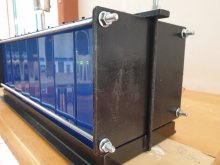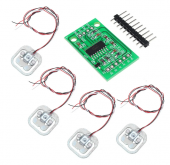sremick
Mostly competent. Knows enough to be dangerous
What someone could do is take a scale and sandwich it at the end of 16 cells compressed by threaded rods, then charge the cells and see if the pressure changes.
My current plans for my portable kit includes something along these lines. Although it won't be particularly well-calibrated... mostly to satisfy my curiosity in how cell pressure changes relatively over the course of the charge cycle.
I'm still working out the details and it depends on whether it all works out. Right now it's "iffy" and this feature might face the chopping block. I managed to roughly calibrate the pressure pad with a roughly-calculated fitted curve but it turns out trying to read a resistance range in megaohms is a challenge on an arduino. I have another trick up my sleeve though...







